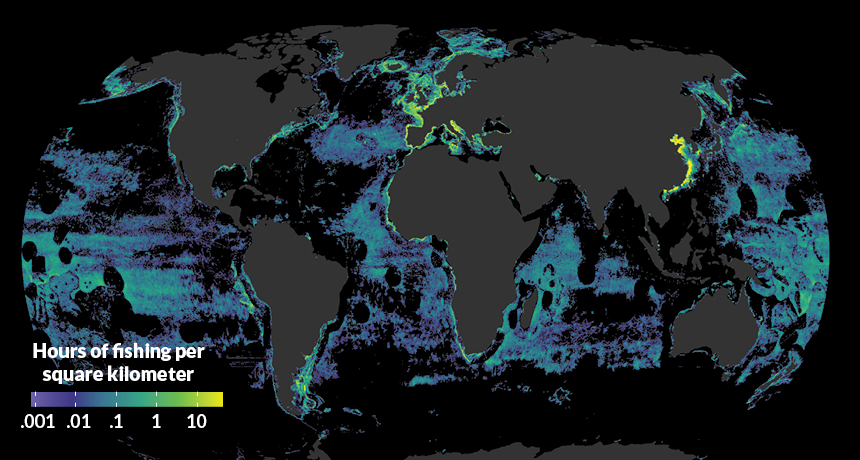New mapping shows just how much fishing impacts the world’s seas
Fish are harvested from more than half the area covered by oceans, and some spots are super busy

VESSEL VIEWER By tracking the activity of more than 70,000 fishing vessels, researchers made this 2016 map of total global fishing activity. Dots represent the average hours of activity within an area spanning 10,000 square kilometers.
Global Fishing Watch
Fishing has left a hefty footprint on Earth.